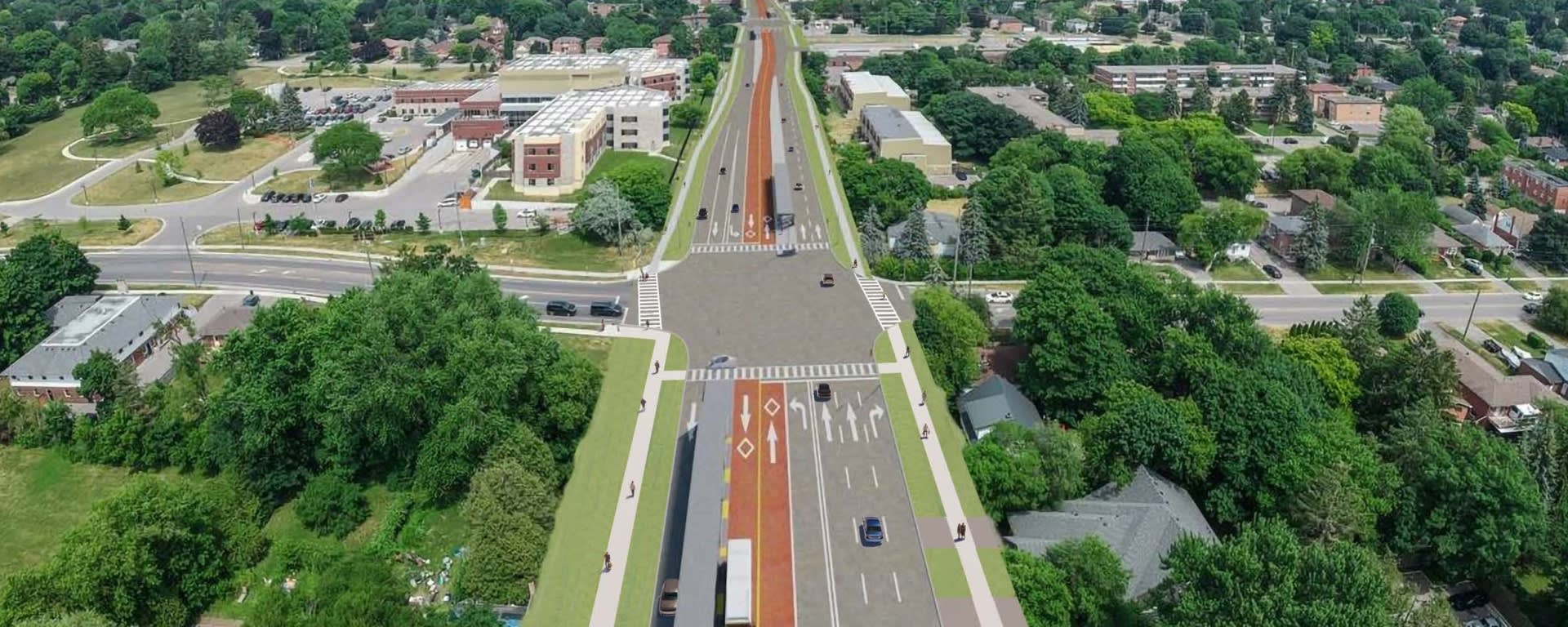Public input wanted for Durham-Scarborough Bus project
An Environmental Project Report is released for the Durham-Scarborough Bus Rapid Transit (DSBRT).
Jan 21, 2022
Metrolinx is asking for the public’s help as the Durham-Scarborough Bus Rapid Transit (DSBRT) project takes an important next step in the transit building process.
Earlier this week (Jan. 20), the transit agency issued a Notice of Completion for the DSBRT Environmental Project Report (EPR) and is asking the public to review the report starting today (Jan. 21).
Anyone interested in participating can do this by going to Metrolinx Engage.
Now you might be wondering, what does this all mean?
Metrolinx is in the business of connecting people by building transit across the Greater Toronto and Hamilton Area (GTHA).
In Scarborough and Durham Region, the DSBRT will provide a 36-kilometre bus rapid transit line that will connect Oshawa, Whitby, Ajax, Pickering, and Scarborough. It means bringing all day, 15-minute or better service travelling along dedicated bus lanes and resulting in 10-20 minutes travel time savings. It will also lead to improved transfers between routes.
Want to understand more about what a BRT is? Check out the short video below:
What exactly is a TPAP or EPR and why does DSBRT need them?
Acronyms are great and serve as mental shortcuts but can be confusing.
Let’s look at TPAP or EPR. The Transit Project Assessment Process (TPAP) is part of the process for Ontario transit projects that includes consultation, assessment of potential environmental impacts, an investigation of measures to mitigate negative impacts, and documentation.
To support the TPAP, environmental studies are conducted, to see what kind of effects will come from transit construction and eventual introduction of fully operational transit.
As part of the process, the proponent (the company or companies chosen to build the project) will look at the environment within areas to see how they may be impacted by the work. It looks to answer questions such as are there any animal or tree species at risk? Are there any natural heritage sites? What impact would there be on air quality, noise, and vibration?
It also looks at what possible impacts will be felt by people and businesses. Once potential impacts are identified, mitigation measures are developed and documented.
Dundas Street east of Byron Street, looking east. Rendering is a concept and subject to change. (Metrolinx image)
People are a very important part of the whole process and that’s where the consultation piece comes in. Leading up to and during the TPAP, multiple consultations are held where area residents, businesses, stakeholders, and the public are invited to learn about what has been uncovered at various stages of the process and to lend their voices and provide comment.
These sessions are important because they often help to shape the end product.
All the findings gathered throughout the TPAP are then distilled down into a report – the EPR – and Metrolinx is asking the public to review and provide comment.
Where we are on DSBRT
Activities held to date include:
Project Timeline
Next Steps
Now that the DSBRT EPR has been completed, the public is given an opportunity to comment for a period of 30 days from Jan. 21 to Feb. 22, 2022. After that, there will be a 35-day Minister’s review period from Feb. 23 to Mar. 29, 2022.
Preliminary design plans within each municipality have been refined based on public feedback between 2019 and 2021 and are now available on Metrolinx Engage
The Preliminary Design Business Case (PDBC), the next major phase in the transit planning process, is scheduled to be completed this year.
by Suzanne Schofield Metrolinx communications senior advisor
